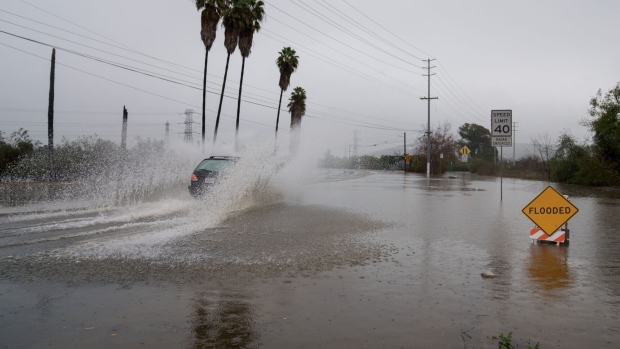Apr 16, 2024
Climate Risks Fuel Niche Market in Customized Muni-Bond Funds
, Bloomberg News

(Bloomberg) -- US states and municipalities face a daunting challenge — and added costs — girding against weather that’s becoming more extreme. Now a niche market is springing up for investors who are looking to target their dollars toward projects aimed at mitigating those risks.
A growing cadre of investors is turning to separately managed accounts, or SMAs, working with advisers to design individualized portfolios that allow them put their money toward projects aimed at abating flooding and other potential hazards.
“A lot of the strategies are newer in the grand scheme of things relative to standard funds or vehicles,” Lauren Kashmanian, director of portfolio management and responsible investing at Parametric Portfolio Associates, an advisory firm specializing in customization. She’s seen increased demand from clients interested in investing in projects like clean drinking water and renewable energy.
The heightened interest in the funds is coming at a time when ESG — an investing approach that leans into environmental, social and governance issues — has come under attack from conservative lawmakers, including in the state of Texas. But the need to spend on projects to adapt to climate change is only growing.
Municipal Market Analytics says borrowing in the municipal bond market could double in the next decade as entities spend to guard against climate change and resume deferred maintenance and infrastructure projects.
Extreme weather cost the US more than $400 billion last year, according to Bloomberg Intelligence’s Climate Damages Tracker. And BI’s Andrew John Stevenson says more of the costs to address the impacts will likely shift from the federal to state and local governments.
Breckinridge Capital Advisors started offering what it calls values-aligned customization in response to client requests, said Ruth Ducret, a senior research analyst who’s also a member of the firm’s sustainability committee. The firm now has $5.3 billion in sustainable muni investments under management.
Breckinridge says it’s “agnostic” in terms of the use of proceeds or issuers’ ESG profiles. Instead, it screens for projects in communities that are underserved and need funds to mitigate climate effects.
In September, the Boston-based firm, which specializes in SMAs, introduced three new customized funds, including one addressing climate risk. The others focus on essential-service infrastructure in underserved communities and on “net-zero” emissions.
“We’d been hearing for years that clients were interested in a product more aligned with their values,” Ducret said in an interview. “Our challenge being a high-grade muni asset manager is that we invest in an average credit quality that’s AA.”
SMAs of all types have been growing in popularity, though most have high minimums that limit them to wealthy investors. Assets in these accounts have more than doubled in the past decade, to roughly $790 billion last year from around $300 billion in 2013, according to Vikram Rai, head of municipal markets strategy at Wells Fargo & Co.
Read More: Fast-Growing Force in Muni Market Is Upending Mutual Funds’ Grip
The performance of the so-called green-bond sector has roughly matched the broader muni market, an important consideration as money managers “have a fiduciary duty to maximize profits and they (including clients) would want to invest in projects that benefit the broader community as long as the performance penalty is reasonable,” Rai said via email.
Widespread Investment Needs
The US Municipal Green Impact index is down about 1.5% year to date, compared with a decline of approximately 1.3% for the broader muni index, according to data compiled by Bloomberg.
“Over the last four or five years, we’ve seen some pretty good growth in this space,” Marc Uy, fixed income portfolio manager at AllianceBernstein, said in an interview. “The reality is that there’s opportunities and there’s communities in every single state across this country in need of investment.”
Investment managers tout the ability to drill down into risks more deeply as another advantage of SMAs.
“The level of disclosure is limited and uneven,” said Jonathan Bailey, global head of ESG and impact investing at Neuberger Berman. “That means that it is possible to identify two issuances that have similar pricing but have different levels of climate risk exposure.”
Neuberger helps to assess this exposure by tapping into an insurance-linked securities unit that underwrites physical climate risk. Neuberger’s municipal-impact SMA, which includes projects in renewable energy and water and sewer projects, has matched benchmark performance over the past five years, said James Iselin, its head of municipal fixed income.
Breckinridge uses an outside data provider to supplement its own research, while AllianceBernstein has a partnership with Columbia Univeristy’s Climate School.
Investors are also becoming more aware as they observe extreme weather in their own communities, Bailey said. With muni yields at attractive levels, they’re asking: “Can I get a competitive yield, and then get that positive sort of tilt as well?”
--With assistance from Eric Kane.
(Corrects spelling of Breckinridge in eighth paragraph.)
©2024 Bloomberg L.P.






